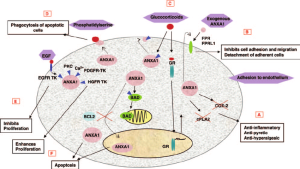In a Translational research with bulk RNA sequencing analysis, scRNA-seq, and in vitro validation Hong Hu *et al.* from the Harbin Medical University published in the Journal: Discover Oncology to elucidate how methionine metabolism contributes to the immunosuppressive tumor microenvironment in gliomas, with a focus on macrophage polarization mediated by ANXA1. Elevated methionine metabolism in glioma cells correlates with higher WHO tumor grade and an immunosuppressive microenvironment. High methionine metabolic activity fosters M2 macrophage polarization via ANXA1, which is downregulated upon methionine deprivation 1).
Critical Review
This study leverages multi-omics datasets, particularly MMA-scoring and scRNA-seq, to draw a novel link between methionine metabolism and the immune suppressive phenotype in gliomas, focusing on macrophage polarization. The authors make a credible case for metabolic reprogramming as a driver of glioma malignancy. However, there are caveats:
– Strengths: The integration of bulk and single-cell RNA-seq enhances resolution, and the use of in vitro validation lends support to mechanistic claims. The correlation between MMA-scores and glioma grade is statistically compelling.
– Limitations: Despite the innovative premise, the study relies heavily on correlative data. Functional validation, particularly in vivo or using clinical samples, is lacking. The assertion that ANXA1-mediated macrophage polarization is solely Met-dependent needs further biochemical interrogation. Furthermore, patient sample heterogeneity and potential confounders are not adequately addressed.
– Mechanistic Gap: While ANXA1 expression is shown to respond to Met availability, its downstream effects on macrophage behavior are inferred rather than mechanistically dissected.
– Clinical Implications: The study’s translational relevance is speculative. No clinical outcome data (e.g., survival stratified by MMA-score) are presented, and therapeutic exploitation remains conceptual.
Final Verdict: Ambitious and methodologically diverse, but insufficiently validated for clinical translation.
Takeaway for the Practicing Neurosurgeon: While methionine metabolism may signal tumor aggressiveness and immune evasion, it is not yet a practical biomarker or therapeutic target without deeper functional validation.
Bottom Line: Promising hypothesis linking glioma metabolism to immune suppression via ANXA1; more robust causal evidence is needed before clinical application.
Rating: 6.5/10
Title: Glioma promotes macrophage immunosuppressive phenotype through ANXA1 in a methionine metabolism-dependent manner Citation: Hu H *et al.* Discover Oncology. 2025 Jul 6;16(1):1269. doi:10.1007/s12672-025-03112-y Publication Date: July 6, 2025 Corresponding Author Email: liuhuaileinsdm@hrbmu.edu.cn
